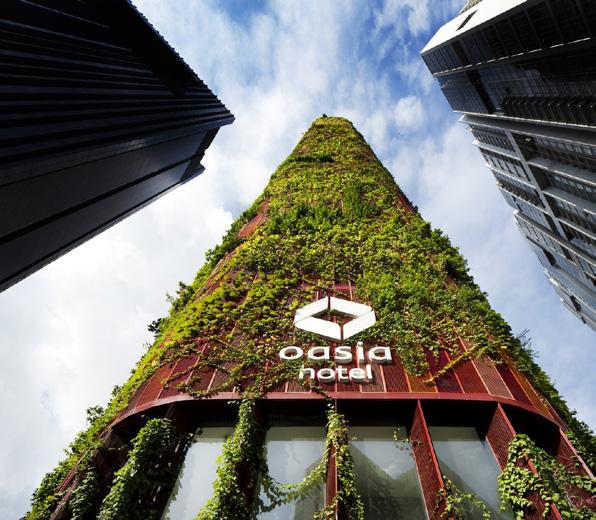
1 minute read
Sustainable Architecture in Skyscrapers Without Sacrificing Design
Climate change is real, and people’s concerns have been manifested in many ways. (Think all-electric vehicles, for example.) And ecofriendly living is not new to architecture, as so many stories and pictorials that have filled these pages over the years indicates. It is very much in vogue in skyscrapers – and it is being accomplished all around the world without giving up high design.
Bank of America Tower (New York City)
The Bank of America Tower in New York City (designed by Rick Cook) is at the forefront of sustainable building design with such features as floor-toceiling window glazing, which traps heat and maximizes natural light. And the building collects rain water to reuse throughout the structure.
Pixel Building (Melbourne, Australia)
Designed by Australianbased Studio505, this building employs an intricate assembly of recycled colored panels to provide occupants with maximized light control. It came to be Australia’s first carbon-neutral structure.


Taipei 101

This 1,667-foot-tall skyscraper was designed in 2004 by C. Y. Lee. It uses low-flow water fixtures that reduce water usage by at least 30 percent compared to average building consumption and save roughly 7.4 million gallons of water each year.
Shanghai Tower

Towering 2,073 feet in the air, the Gensler-designed Shanghai Tower is the second tallest building in the world. It has a “transparent second skin,” which consists of a double-glass façade that significantly reduces the building’s carbon footprint. A LEED Gold certified building, the tower’s exterior lighting is powered by winddriven generators.
One Central Park (Sydney, Australia)
Designed by Jean Nouvel, this building is as bold as it is eco-friendly. The structure is covered in 35 different species of plants, effectively trapping carbon dioxide, emitting oxygen, and providing energy-saving shade.

Bahrain World Trade Center

Designed by Atkins in 2008, this structure’s eco-friendly features include three skybridges holding wind turbines that generate power from strong breezes coming from the nearby Persian Gulf.
Oasia Hotel (Singapore)
The WOHA-designed hotel was completed in 2016, the lush, fertile building utilizes its many gaps and porous exterior to allow natural air to funnel in and around the interiors, thereby saving on energy.
Patience is the ability to idle your motor when you feel like stripping your gears.
If people from Poland are called Poles, why aren’t people from Holland called Holes?
If people from Poland are called Poles, why aren’t people from Holland called Holes?
JON GIMBER
jon@lordgreenstrategies.com
Jon Gimber is a Project Manager for LORD Green Strategies











